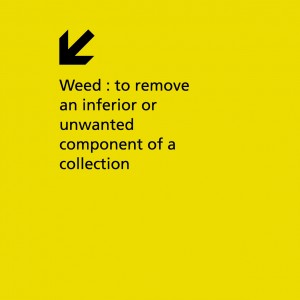Having worked in schools, in various roles, more on than off since 1982, I’ve comfortably assumed that I know quite a deal about leadership in schools… but schools have changed, are changing still, and I am changing too as I participate in the new challenge of the role of Teacher Librarian. This opportunity now, courtesy of the MEd(TL), to learn about the theory behind the practice of leadership, has given me pause, and an opportunity to reflect – both on the leadership I have witnessed in schools over the years, and on my own participation in it.
My viewpoint now is that when I started in schools, leadership was conceptualised as the responsibility of a small subset of the staff of a school. Certainly there was the sense that the role of Principal or Headmaster/Headmistress was exclusive in the perception of a well managed school – in essence there was a real sense that leadership lived or died in a school dependent on the personality characteristics and practices of that single individual. When I look back at that approach now, I realise this was quite a comfortable perception for everyone other than the Principal. Thirty years later, my thoughts now are that leadership in schools is much more than the role of the Principal – trouble being that this may still put me in conflict with those staff who continue to perpetuate this notion of effective school leadership being dependent on that single individual at the head… and I don’t think it is that simple anymore at all.
As this course has presented readings covering leadership theory and the changes that have occurred over the same time span that I have been teaching in schools, so I see how my own view of leadership and participation in it, have developed over these decades. Ideas about “natural born leaders” have floated around during that time, but I have come to believe that leadership is as much about innate characteristics as it is about learning how to lead… and being given opportunities to practice those skills. The concepts of Distributed Leadership and Transformational Leadership are of particular interest at my career stage and I look forward to a deeper understanding of these theories.
This year, as I started a new adventure in a NSW Department of Education School Library, circumstances have already provided a series of challenges and opportunities to participate as Teacher Librarian as leader, and also to observe other staff in various positions, participate in leadership development – regardless of their named position.
The ASLA guidelines for excellence in Teacher Librarianship provide a framework for establishing the role and taking a place in the leadership in my school. These give a strong focus as I look for opportunities to:
actively engage in school leadership and participate in key committees
promote and nurture a ‘whole school focus’ on information literacy policy and implementation
build and foster collaborative teams within school and professional communities
provide effective and transformational leadership to school library and information services staff
As it happens, my new school has also been in particular need of leadership in IT management and ICT integration, and these areas within my skill set have been utilised within my new situation – providing a bridge for other projects and collaborative practices. Recently I have been approached by the Head Teacher of the English Faculty to consult on plans for establishing a Literacy Committee for our school in 2016 and I look forward to those challenges.
As this course expands my knowledge of leadership practice, I look forward to increasing my availability to participate in an essential Servant Leadership opportunity within my school as their Teacher Librarian.
Bibliography:
ASLA (2005) Standards of professional excellence for Teacher Librarians. 1st Ed. [PDF] Australian School Library Association. Available at: http://www.asla.org.au/policy/standards.aspx


